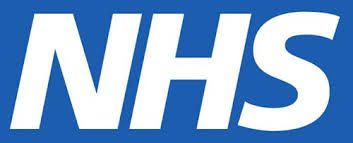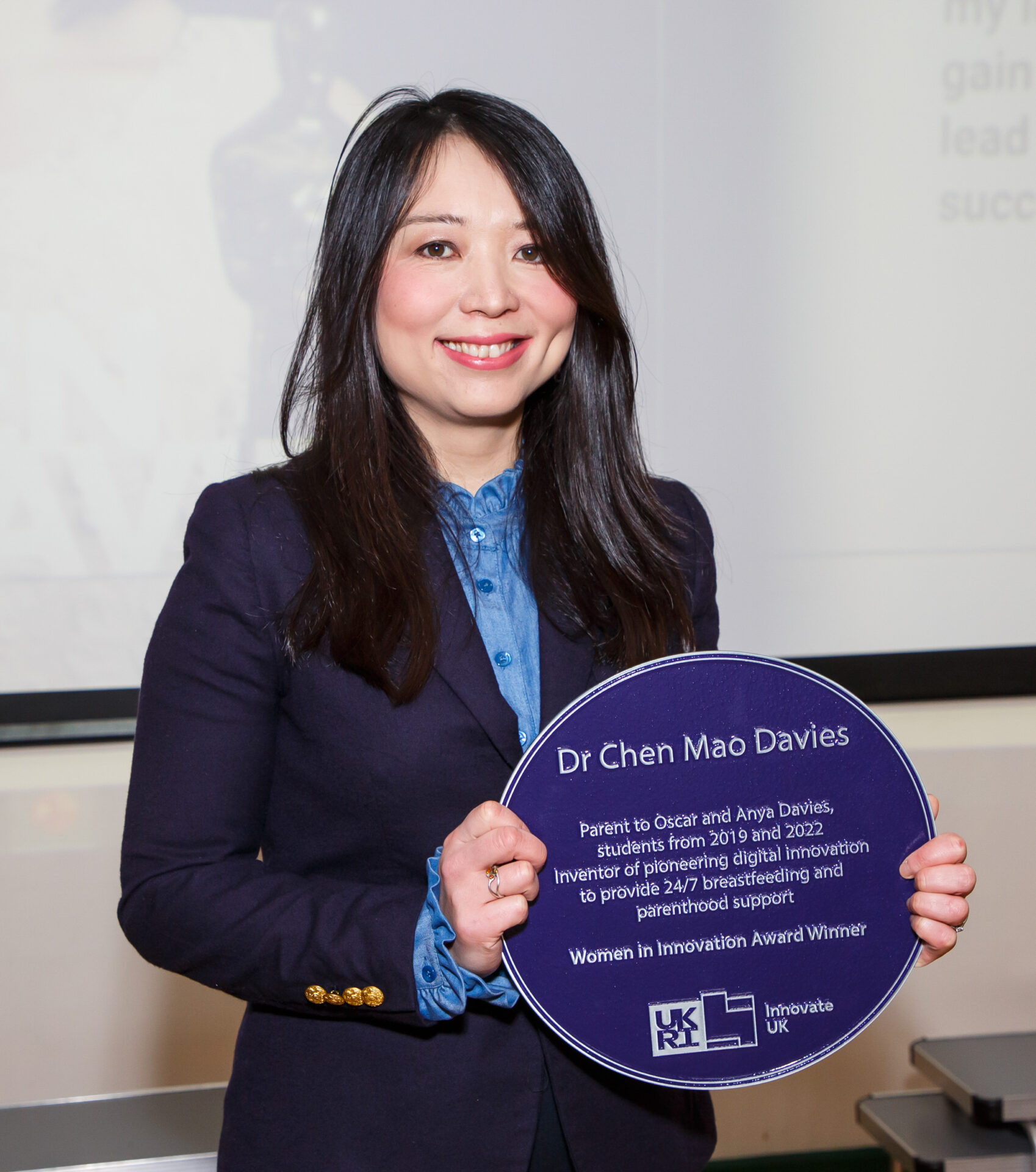Meet Dr Chen Mao Davies, Founder and CEO of Anya by LatchAid Ltd. – an award-winning pregnancy, parenting and breastfeeding support app that utilises cutting-edge 3D interactive technology and AI intelligence to provide new mothers with support.
Last year, Chen was announced as one of the Fellows of the NHS Innovation Accelerator (NIA) programme 2023, having previously won four funding competitions from Innovate UK and being named one of the UK’s ‘Top 40 female innovators’ of 2021 in the prestigious Innovate UK’s Women in Innovation Awards.
Nationally, the Anya by LatchAid app is available to almost 5 million NHS service users and is the top-rated breastfeeding app in the health app library, ORCHA.
Most recently, the company has recently been awarded £500k SBRI Healthcare funding to address health inequalities in maternity care.
In this blog, Chen tells us about her innovation journey to date and how the West of England AHSN has supported Anya from business acorn to the growing success story of today.
Tell us a little bit about your innovation. The what and the why?
The situation for breastfeeding support globally is challenging. The UK has one of the worst breastfeeding rates in the world and, sadly, 90% of mothers give up before they want to, due to lack of support, pain and health issues and feelings of isolation and depression.
I believe that all parents deserve the support and empowerment to give their child the best start in life, which is why I first developed the LatchAid breastfeeding tool, after experiencing my own struggles.
The original LatchAid app was created using 3D avatars to demonstrate breastfeeding skills, such as how the baby should take the mother’s areola into their mouth, achieving a ‘deep latch’ to prevent damage to the breast.
What started as a breastfeeding support app has now developed into a much bigger parenting support app – Anya by LatchAid – delivering virtual communities and AI-powered support to provide personalised around the clock assistance for parents throughout the first 1001-days of their child’s life.
What was the light bulb moment?
Before founding Anya by LatchAid, I had a dream career working in an Oscar and BAFTA-winning visual effects team behind blockbuster films including Gravity and Blade Runner 2049.
However, my life changed dramatically after giving birth and experiencing tremendous breastfeeding challenges. Struggling to achieve a good latch, I suffered from breast infections, baby’s weight loss and postpartum depression.
As a computer graphics and animation specialist, it occurred to me that I could use my expertise in CGI in movies to create an app that would help women visually learn breastfeeding skills, using 3D avatars.
Which health innovation networks (formerly AHSNs) have you been supported by?
Health Innovation West of England (and other networks too!) have supported us since the beginning.
Since those early days when I took my daughter Anya (when she was still in a pram) to the Health Innovation West of England’s Health Innovation Programme, a bootcamp for health innovators, I have built a network of investors, experts, mentors and fellow entrepreneurs.
We continue to receive ongoing support from the Network with regards to funding opportunities, application reviews and networking – including the EU regional development funding, Innovate UK grant application review, ORCHA app review funding, HETT shows, NHS events, as well as support in designing the NHS app pilot evaluation and with our SBRI Healthcare and NIA applications and interviews.
What’s been your toughest obstacle to date?
Raising equity investment as a solo, female, Chinese founder has been challenging, particularly in the early days, as a women’s health start-up. And juggling multiple roles as a CEO, CTO, CPO, while being a mum of two small children – and having to learn as fast as possible to lead a fast-growing start-up.
What are your hopes for the future?
In November 2022 we secured £100k of Phase 1 SBRI Healthcare funding to address healthcare inequalities in maternity care. This allowed us to rebuild the app, engaging service users in the co-design and co-creation of its features.
The Gen 2.0 Anya app (available in both iOS and Android) was launched in December 2022, housing LatchAid as its upgraded, 3D breastfeeding tool – which now has additional skin tone capability for mother and baby.
Developing patient and public involvement and engagement (PPIE) workstreams, to engage service users in the co-design and co-creation of app features, is important work that looks at continuity of care in maternity care and is designed to deliver to the maternity care CORE20PLUS5 NHS strategy. There is still so much to learn and develop in this area, to further our PPIE R&D work and its impact.
Being part of the NIA programme will also enhance credibility and help Anya achieve wide scale deployment across the NHS.
We’re thrilled that Anya has been granted a £500,000 award by NHS England for ground-breaking SBRI Healthcare phase-2 initiative aimed at combating health inequalities in maternity care. Black and Asian women face higher risks during pregnancy and childbirth in the UK and sadly there are poorer health outcomes for babies from social economically deprived backgrounds. Looking ahead to SBRI phase-2, we’re poised to expand our impactful work through further Public Patient Involvement and Engagement, product R&D, and large-scale ICS-level pilots
I’m really looking forward to working with the health innovation networks, SBRI Healthcare, NHS England and the Innovation Accelerator over the next three years to see what we can deliver together to provide this vital support for expectant and new parents!
What’s the best part about your job?
It’s been amazing to see how my idea has grown into a company and a product that is helping people and changing the face of support for parents who really need it.
The SBRI Phase 1 project, in particular, has been so interesting, working with three target audience groups – black parents, young parents under 25 years old and mothers from deprived social economic areas. We’re listening to the key themes from these users and healthcare professionals, and then working with the target groups to design the new app features and clinical content tailored to their needs.
What are your three pieces of advice for budding innovators?
Entrepreneurship is a marathon not a sprint – it’s a long and difficult journey. We can use the analogy of bamboo, which develops complex routes underground for four years, before emerging from the soil as one of the world’s fastest growing plants. I don’t think anyone is born to be an entrepreneur, a risk-taker or to be brave. I was quiet growing up, but entrepreneurship forced me out of my shell.
Resilience – I founded Anya while juggling motherhood and another job. Entrepreneurship is all about your resilience when something happens and not being afraid to fail, because trying your best is already a great success.
Build a support network around you – all the amazing people who joined my journey along the way as team members, advisors, supporters and partners have nurtured and shaped me as an entrepreneur and a person. Being passionate, authentic and humble is the key for me personally to attract more and more people to join me in fulfilling my mission and vision for Anya!

Grace Gimson is the founder and CEO of Holly Health, a digital platform dedicated to transforming healthcare through preventive and person-centered digital health coaching. The platform aims to support individuals struggling with mental or physical health. Grace is a generalist with a background in operations, business leadership, and scaling tech startups such as Deliveroo. [...]

HN (Health Navigator) is an AI-powered health innovation that enables preventative care through predictive analytics. Founded in Sweden by Dr Joachim Werr, a former A&E consultant, HN is now supporting healthcare systems across the UK to identify high-risk patients before they reach crisis point. Joachim shares the journey behind HN and the transformative impact of [...]

The government has set out three shifts it wants to see happen: treatment to prevention, hospital to community, analogue to digital. HealthTech has a crucial role in supporting the delivery of all three. But using technology to help deliver these changes requires procuring the technology, and when all the noise is about there being no [...]






